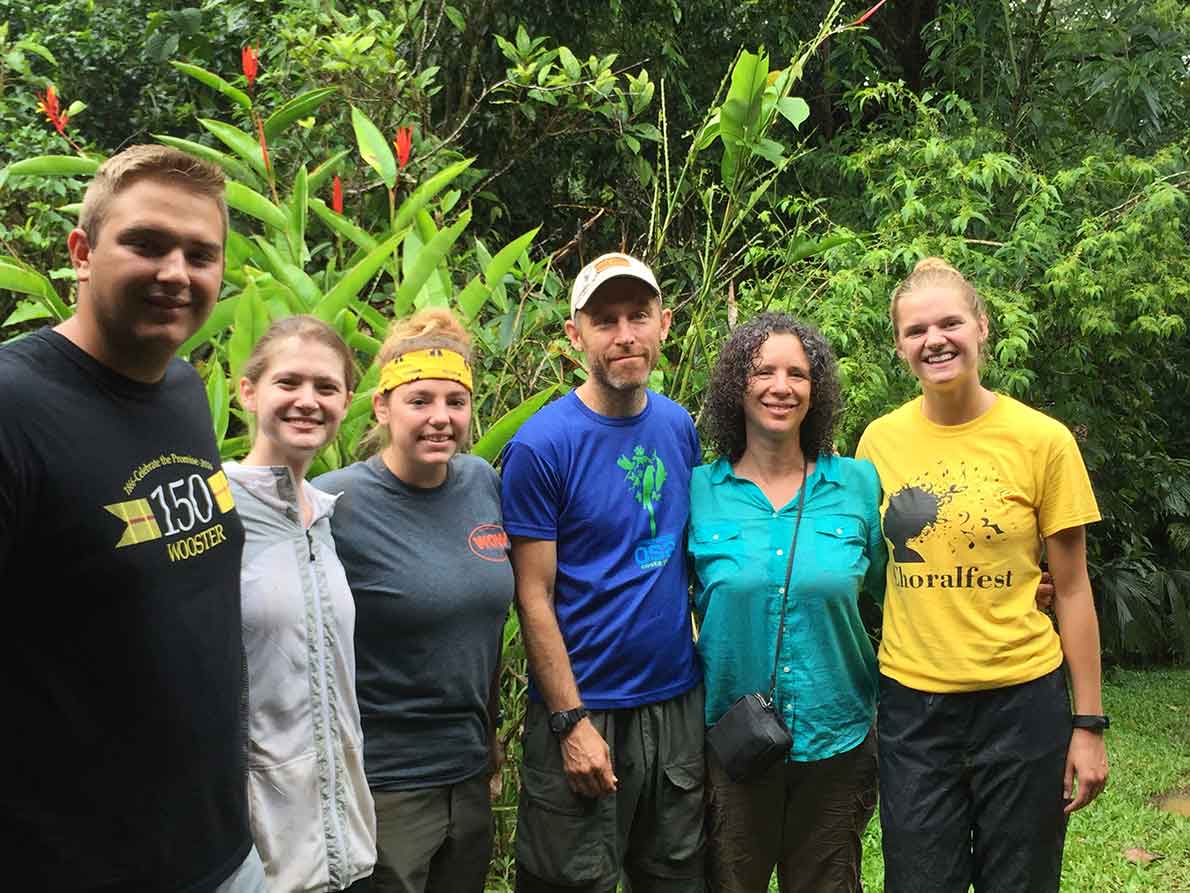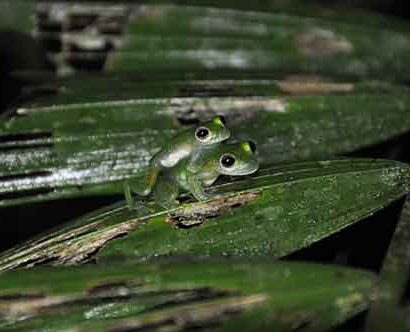
Rick Lehtinen coauthors publication on second-growth rainforests with Wooster graduates

Rick Lehtinen, professor of biology at The College of Wooster, recently published an article with five Wooster graduates, entitled “Is second-growth rainforest good enough? Going beyond community composition” in the journal Biodiversity and Conservation. Lehtinen was the Independent Study advisor for biology graduates Christopher Gumpper ’18, Keara Weiss ’20, Linnea Johnson ’17, Nathan Weltman ’16, and Mackenzie Kellar ’18, who appear as coauthors on the article that draws on their I.S. research. The article compares the biodiversity and reproductive viability of old-growth, or original, rainforests with second-growth, or younger, rainforests using data that the six researchers collected on glass frogs.
In tropical regions, such as Costa Rica and Trinidad and Tobago where Lehtinen and his students conducted their research, second-growth forests often grow quickly after old-growth forests are destroyed. “Because of all of the logging and removal of the old-growth forests, an important question given the second-growth forest springing up is whether the second-growth rainforest is actually valuable from a wildlife and biodiversity standpoint,” Lehtinen explained. “The main impetus for why we did this study was to make comparisons between second-growth forest and old-growth forest and see what difference there was if any.”

Male and female Dusty Glassfrogs (Teratohyla pulverata) near Piro Biological Station, Osa Peninsula, Costa Rica in 2016, photo: Rick Lehtinen.
To compare the two types of forests, Lehtinen and his students studied populations of glass frogs, a group of frogs found in Central and South America that breed along streams. “We decided to set up plots along streams and sample as many second-growth rainforests and old-growth rainforests as we could and count up the frogs and make comparisons,” Lehtinen explained. The researchers found that there was no difference between the glass frog populations in the two different forests which differed from what Lehtinen had anticipated. “The glass frog communities in second-growth forests were actually indistinguishable from those in old-growth forests,” he said.
While there have been previous studies that make comparisons between old-growth and second-growth forests, Lehtinen and his students went a step further to determine whether the glass frogs were actively reproducing in the second-growth forests rather than simply spilling over from the old-growth forests which are often adjacent, something that had not yet been researched. By counting the egg masses and tracking the survival of the embryos in both old and second-growth forest, the team determined that “the embryos survived at the same rate between old-growth and second-growth forests, the number of egg masses we found was the same statistically speaking, the number of eggs that the females laid was the same, and the male reproductive success was actually higher in second-growth forests,” Lehtinen said. “Second growth rainforest is actually viable habitat; the frogs rapidly colonize it and use it.”
While Lehtinen plans to continue to study frogs as well as other amphibians in Costa Rica and Trinidad and Tobago, he is proud to have five years of work that took up much of his life finally published. “We did seven expeditions over five years in two different countries at 30-some different streams,” he said. “It took a long time to gather the information and a lot of sweat, mosquito bites, and late nights because we’re doing all of this after dark up to our necks in these rivers and streams. But everything was telling us that these second-growth rainforests do have conservation value, which is our conclusion at the end of the day.”
Above pictured left to right: Chris Gumpper ’18 , Amberleigh Ray ’18 , Sarah Comstock ’18, Rick Lehtinen, professor of biology, Laura Sirot, associate professor of biology, and Mackenzie Kellar ’18. completed research at Bijagual Ecological Reserve in Costa Rica in 2017 that resulted in a study published in a scholarly journal. Photo: Paul Foster
Posted in News on February 11, 2021.
Related Posts
Related Areas of Study
Biology
Explore molecular and cellular biology, ecology and more with top faculty and access to extensive lab facilities.
Major Minor

